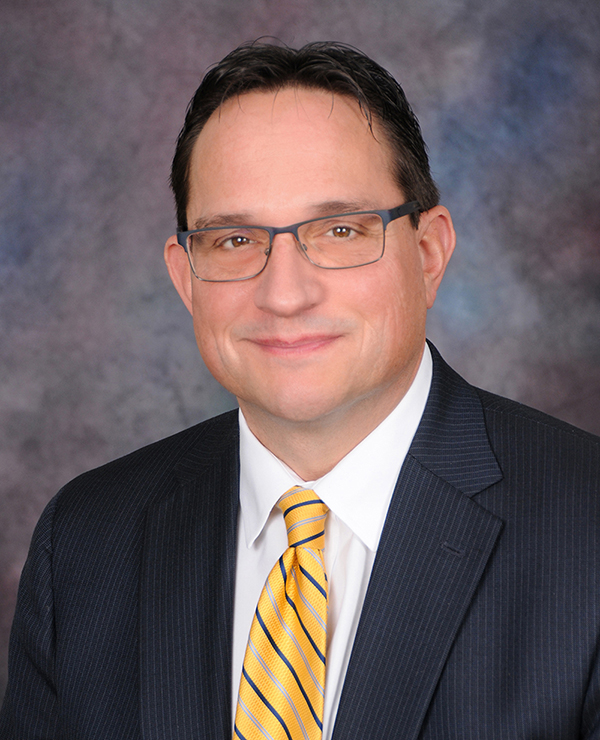This article was published in WisPolitics on Feb. 16, 2024. See the article here.
 Eric Borgerding
Eric Borgerding
In Wisconsin, we’re proud to have the fourth-largest share of five-star hospitals in the nation; a federal measure of quality given to hospitals that provide the highest level of quality care. The work of our hospitals, and the exceptional people who work in them, is not done in search of this recognition, but rather to help the people who rely on them every minute, every day, every year.
Wisconsin hospitals and health systems are committed to empowering patients with access to accurate and timely pricing information so they can make informed decisions when seeking care. Significant investments have been made in technology and staffing to adopt federal hospital price transparency requirements, which include posting “machine-readable files” and rates for “shoppable services.” To make all this consumer-friendly, more and more Wisconsin hospitals – ninety-five percent of which are nonprofit – have invested in price estimator tools that allow anyone to get a price estimate for a variety of services. Unfortunately, groups outside of Wisconsin misleadingly want you to think otherwise.
A recent Urban Milwaukee
article echoed several inaccurate claims about hospitals’ – specifically in the Milwaukee area – compliance with federal price transparency regulations. The article was predominantly based on a seven-month-old, slanted report from Patient Rights Advocate. PRA is an agenda-driven advocacy group based in Massachusetts with a long track record of outlandish attacks on hospitals and misleading reports that have repeatedly been debunked.
Given its well-demonstrated, anti-hospital agenda, it’s disappointing – although not surprising – that PRA used flawed methodology, broad assumptions, and baseless, subjective definitions in its report. Independent analyses by several different groups have consistently disputed PRA’s findings, labeling them as “misguided,” “misleading,” “inaccurate,” and a “sizable overstatement of non-compliance.”
Contrary to claims of hospital noncompliance by PRA and the Wisconsin Institute for Law and Liberty (WILL), the federal Centers for Medicare and Medicaid Services (CMS) – the official and only arbiter of hospital price transparency compliance – has not fined any Wisconsin hospitals for noncompliance, data that is backed up by multiple independent analysts. And it’s not for lack of enforcement, as we know for a fact that Wisconsin hospitals continue to communicate and work directly with federal regulators and industry stakeholders to remain compliant.
Insurance companies, self-funded employers and third-party administrators and networks are bound by similar health care transparency mandates as hospitals, yet it’s increasingly notable that PRA and other anti-hospital groups completely ignore their compliance. We have no idea whether insurance companies, some employers or third-party middlemen are living up to their transparency obligations under the same federal law. There’s no transparent way to know or tell, and some like it that way.
In an
editorial from the past director of the Center for Healthcare Policy at the Texas Public Policy Forum – the group from which WILL borrowed its hospital-only transparency agenda – called out PRA for its overstated claims about price transparency. “PRA has things backward,” the former Texas think tank director stated, while exposing the amount of resources and funding diverted away from patient care by third-party intermediaries. Hospital price transparency is not the only element of the health care cost discussion, yet absent are the insurance companies and the growing networks of third-party middlemen.
A recent
analysis by The Economist exposed the exploding intermediary industry of third party administrators, utilization reviewers, insurance companies, drug distributors, pharmacy-benefit managers and many other groups. These intermediaries increasingly insert themselves into the patient-provider relationship, accounting for a staggering 45% of patients’ medical costs, a percentage that has nearly doubled in the last 10 years. Wisconsin hospitals spend millions each year trying to navigate these disparate and complex mazes of red tape and hurdles simply to be allowed to provide needed care. I’m sure many readers have experienced the same.
This massive “middleman industrial complex” provides no patient care. In fact, studies show how these groups increasingly deny patients’ care. They have an enormous impact on the cost of providing care yet escape any scrutiny. In the spirit of transparency, I believe Wisconsin patients, health care providers and employers have a right to know more about these intermediaries — how they complicate health care and how much they take from health care — so we can work together to address what is driving health care costs.